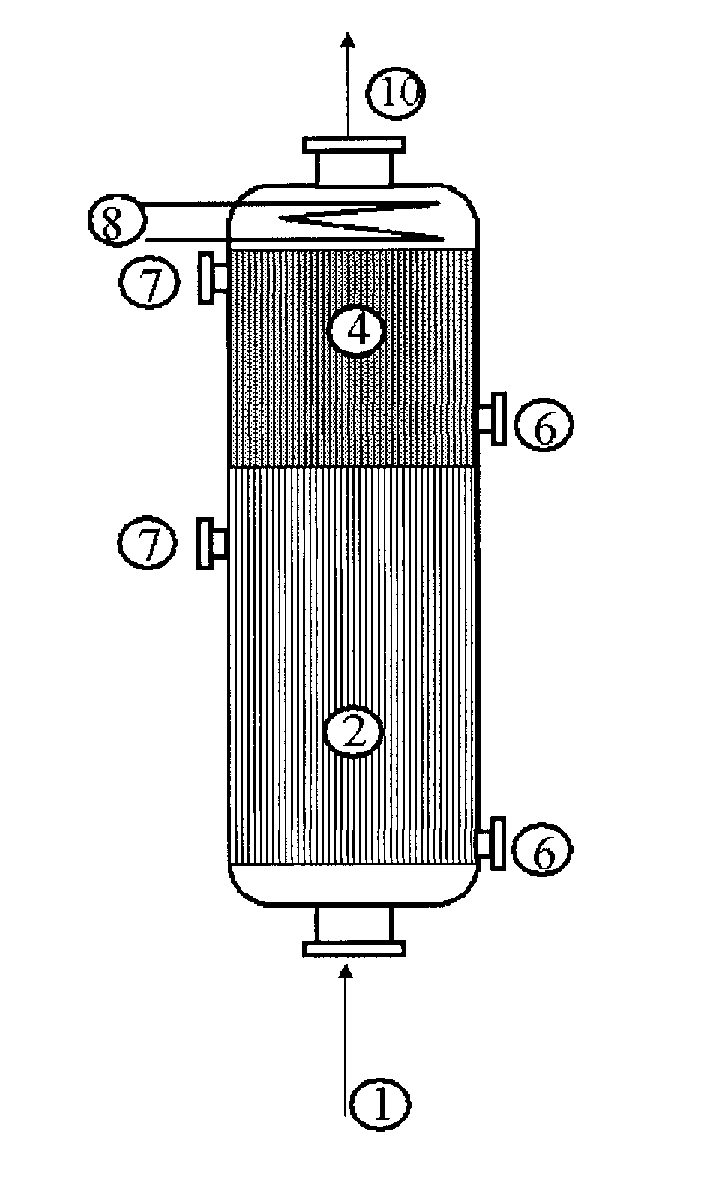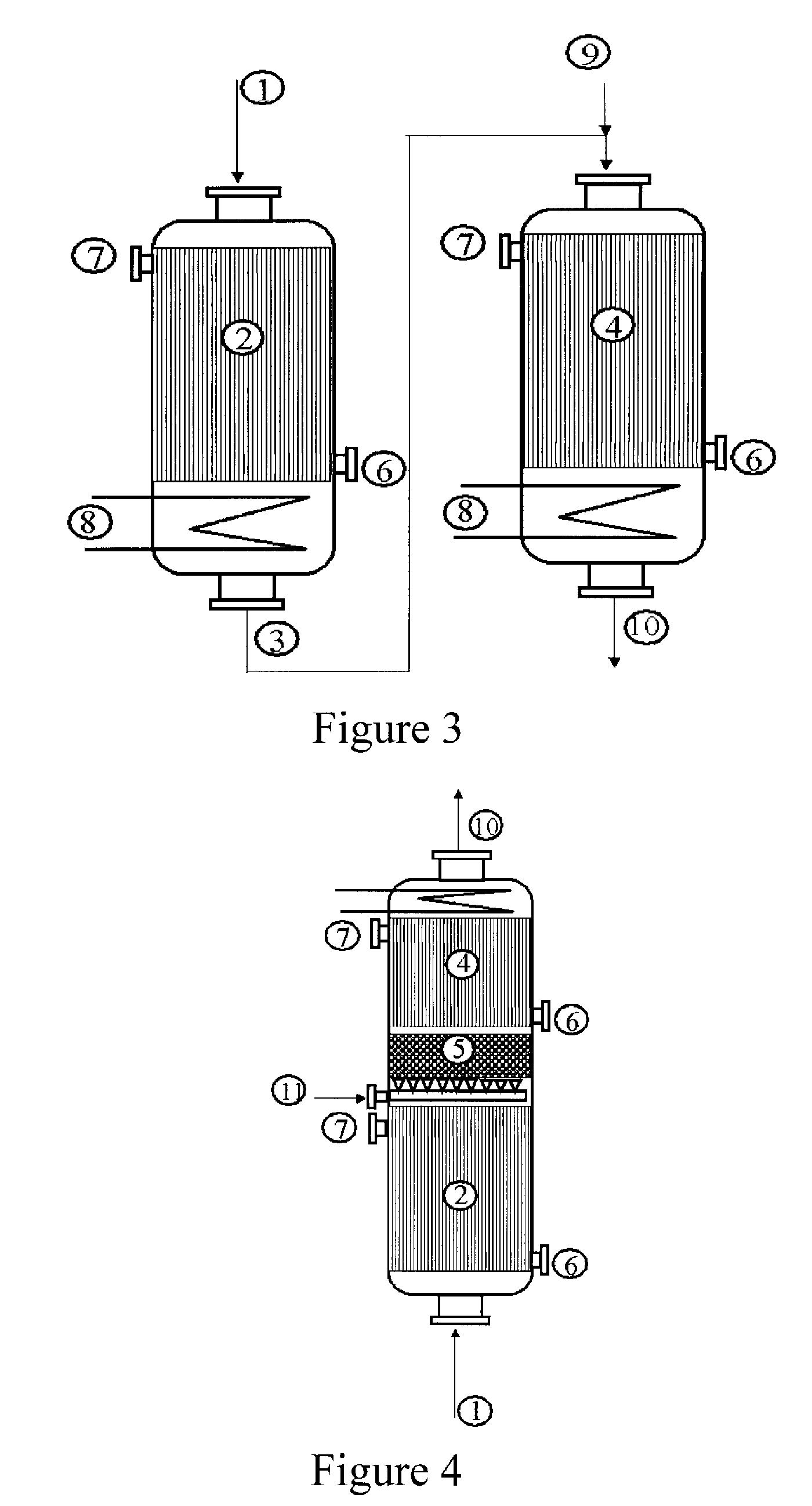Acrylic acid preparation method
a technology of acrylic acid and preparation method, which is applied in the preparation of carbonyl compounds, carboxylic compound preparations, organic chemistry, etc., can solve the problems of yield loss, achieve the effect of increasing the productive output of acrolein, improving the productive output of acrylic acid, and efficiently recovering the heat of oxidation reaction
- Summary
- Abstract
- Description
- Claims
- Application Information
AI Technical Summary
Benefits of technology
Problems solved by technology
Method used
Image
Examples
example 1
[0042]Use is made of a reactor configuration in which the glycerol is cofed with the gas mixture comprising the propylene from the top downward and which comprises three beds of catalyst. The Pyrex reactor is equipped with a sintered glass in order to retain the catalyst.
[0043]A weight of 5 g of catalyst for the oxidation of acrolein to give acrylic acid with the reference ACS4 (from Nippon Shokubai), reduced to a powder in a particle size of 100 to 160 microns and diluted with 5 ml of silicon carbide with a particle size of 0.125 mm, is first of all charged. Subsequently, 9 ml of silicon carbide with a particle size of 0.5 mm are charged. Subsequently, 6.498 g of catalyst for the oxidation of propylene to give acrolein with the reference ACF4 (from Nippon Shokubai), diluted with 7 ml of silicon carbide with a particle size of 0.125 mm, are charged. Subsequently, different beds of silicon carbide are charged, so as to separate the catalyst for the oxidation of propylene from the deh...
example 2
Comparative
[0048]Example 1 is repeated but the aqueous glycerol solution is replaced with pure water. The molar flow rates of the reactants are then: propylene / oxygen / helium-krypton / water-glycerol: 30 089 / 55 584 / 288 393 / water: 76 666—glycerol: 0 (micromol / h).
[0049]The effluents are accumulated in the trap for a time of 78 minutes. The noncondensable gases are analyzed throughout the duration of the assessment. The amount of acrolein produced is 457 micromol / h and the amount of acrylic acid is 23 257 micromol / h.
example 3
Comparative
[0050]Example 2 is repeated but while replacing the dehydration catalyst with silicon carbide. The same feed conditions are used.
[0051]The effluents are accumulated in the trap for a time of 75 minutes. The noncondensable gases are analyzed throughout the duration of the assessment. The amount of acrolein produced is 521 micromol / h and the amount of acrylic acid is 23 363 micromol / h.
PUM
| Property | Measurement | Unit |
|---|---|---|
| pressure | aaaaa | aaaaa |
| pressure | aaaaa | aaaaa |
| temperature | aaaaa | aaaaa |
Abstract
Description
Claims
Application Information
 Login to View More
Login to View More - R&D
- Intellectual Property
- Life Sciences
- Materials
- Tech Scout
- Unparalleled Data Quality
- Higher Quality Content
- 60% Fewer Hallucinations
Browse by: Latest US Patents, China's latest patents, Technical Efficacy Thesaurus, Application Domain, Technology Topic, Popular Technical Reports.
© 2025 PatSnap. All rights reserved.Legal|Privacy policy|Modern Slavery Act Transparency Statement|Sitemap|About US| Contact US: help@patsnap.com



